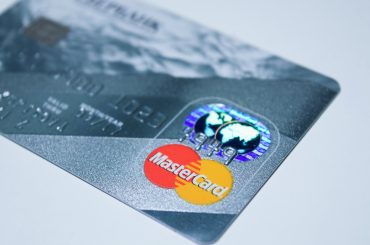Many consumers today are locked out of the existing credit system or prefer not to use payment methods that can get them into debt or hurt their credit scores. The era of digitally-enabled shopping is governed by Gen Z and Millennials, who lack access to traditional credit. To encourage shopping by these consumers, Buy Now Pay Later was launched.
Point-of-sale (POS) financing services in the United States have grown significantly. Trends fueling growth include digitization, rising merchant adoption, increasing repeat usage among younger consumers, and an expanding set of players targeting lending at point of sale, a service known as “buy now, pay later.”
As per Investopedia, Buy Now, Pay Later (BNPL) is a type of short-term financing that allows consumers to make purchases and pay for them at a future date, often interest-free. Also referred to as “point of sale installment loans,” BNPL arrangements are becoming an increasingly popular payment option, especially when shopping online.
Sezzle is one such POS financing service that allows merchants to offer their consumers a flexible alternative to traditional credit. Sezzle has become one of the significant players in the BNPL segment in just five years. As strategy enthusiasts, we thought to explore the business model of Sezzle. We will also evaluate how does Sezzle work and make money?
What is Sezzle? How does Sezzle work?
Sezzle, founded in 2017, is a financial technology company headquartered in the U.S, operating in the United States and Canada. The company offers an alternative payment platform that provides interest-free installment plans at selected online stores. Sezzle works on a “Buy Now, Pay Later” business model.
Sezzle’s mission is to empower the next generation financially. This mission is accomplished by enabling merchants to offer consumers a more consumer-friendly credit alternative. Through its BNPL payments products, Sezzle aims to allow consumers to control their spending, be more responsible, and gain access to financial freedom.
Sezzle primarily targets Gen Z and tech-savvy Millennial consumers, gravitating towards modern, streamlined commerce solutions. Sezzle offers them a flexible, secure, omnichannel alternative with the structural benefit of “creditizing” traditional debit products.
The Sezzle Platform connects consumers with merchants via its core proprietary digital payments platform that instantly extends credit at the point of sale. Sezzle enables consumers to acquire merchandise upfront and spread payments over four equal, interest-free installments over six weeks. Sezzle works on a Capital-light strategy.
Sezzle Platform offers a simple process for retail merchant clients and end-customers. How does this process for Sezzle work?
How does Sezzle work for Retail Merchant Clients?
Step 1: Merchant Integration- The Sezzle Platform is integrated into the website of the Retail Merchant Client. Sezzle provides technical integration and onboarding services to the Retail Merchant Client and remains on-call to provide technical support during the initial integration of the client.
Step 2: Merchant Promotion- Retail Merchant Clients promote Sezzle to their shoppers on product and cart pages to improve sales conversion.
Step 3: Merchant Checkout- The Sezzle Platform is presented alongside other payment options on the Retail Merchant Client’s ‘Checkout’ page.
How does Sezzle work for End Customers?
Step 1: Account Establishment- The End-customer selects Sezzle as its payment option and (if a first-time customer with Sezzle) creates an account.
Step 2: Checkout with Sezzle- The End-customer inputs their information, including the credit or debit card that the End-customer wishes to be debited for future installment payments.
Step 3: Real-time assessment- The Sezzle Platform assesses the transaction in real time, either confirming that the order is successful or declining.
How does Sezzle make money? What is the business model of Sezzle?
Value Proposition
Merchants: By equipping consumers with a flexible payment product, Sezzle helps merchants expand their reach and access a growing pool of consumers who would not otherwise be able to finance a transaction with those merchants.
Sezzle mainly serves merchants in the SMB category but has continued with mid-size direct-to-consumer (“DTC”) retailers and has now accelerated through establishing an increasing number of partnerships with large retailers. As of 2021, Sezzle has 47,000+ active merchants.
Consumers: 80% of Sezzle’s consumer base comprises members of the Gen Z (18-25) and Millennial (26-44) generations, which are generally early in their credit journey, and lack access to traditional credit. As a result, they tend to have fewer viable options for budgeting, achieving financial flexibility, and building a credit history.
Sezzle provides these younger generations, who are newer to credit and are likely to move up the FICO score spectrum as they grow older and transact more often, with a unique solution to these payment challenges. As of 2021, Sezzle has 3.4Mn customers.
Sezzle Competitors
Any player who enables transactions and commerce via digital payments is a competitor for Sezzle. Sezzle has two kinds of competitors:
- Credit card providers also offer products that allow consumers to pay for purchases made with their credit cards in installments rather than as a revolving balance (e.g., American Express and J.P. Morgan Chase). Visa and Mastercard have also introduced technology that facilitates this functionality.
- Sezzle’s main competitors are other BNPL service providers. The U.S. market includes Affirm, Afterpay, Klarna, PayPal’s Pay in 4, and Zip (formerly QuadPay). In addition, PayBright by Affirm and Afterpay operate in the Canadian market. In July 2021, Apple announced its intention to provide a BNPL platform to its consumers called “Apple Pay Later.”
How does Klarna make money | Business Model
To stay competitive, Sezzle adjusts its pricing or offers incentives to its clients to increase payment volume, enter new market segments, adapt to regulatory changes, and expand their use and acceptance of the Sezzle Platform.
Sezzle competitive strategies include up-front cash payments, fee discounts, rebates, credits, performance-based incentives, marketing, and other support payments.
How does Affirm make money | Business Model
How does Sezzle make money: revenue model
So, how do BNPL products like Sezzle make money without interest fees? Simply, by charging the merchants a percentage of the total basket value.
Sezzle made $115 Million in 2021, a 95% growth rate from 2020. Sezzle’s core product offering is free for consumers who pay on time; instead, the business model of Sezzle primarily makes money by charging merchants fees in the form of a Merchant Discount Rate.
| Key Metrics | 2019 | 2020 | 2021 |
|---|---|---|---|
| Net Revenue (in $ Mn) | 15.8 | 58.7 | 11.5 |
| Underlying Merchant Sales (UMS) (in Mn $) | 244.1 | 856.3 | 1,807.8 |
| Active Consumers (in “000) | 914 | 2231 | 3400 |
| Active Merchants | 10,010 | 26,690 | 47,000 |
Core product revenue from Merchants: Sezzle makes money from merchants predominately based on a percentage of UMS (Underlying Merchant Sales) plus a fixed fee per transaction, collectively referred to as merchant fees. Sezzle’s standard payment processing fee is 6.1% plus 30¢ per transaction.
Sezzle pays merchants for the transaction value upfront, net of the merchant fees owed to Sezzle, and assumes all costs associated with the consumer payment, including processing, fraud, and payment default. Merchant-related fees comprised approximately 82% of Sezzle’s total Income in 2021.
Consumer-based revenue: Sezzle does not charge consumers any interest, finance charges, or initiation fees. Instead, Sezzle makes money from fees charged to consumers to reactivate an account following a failed payment.
Additionally, consumers may reschedule their initial installment plan by delaying payment for up to two weeks, for which Sezzle earns a rescheduled payment fee. Consumer-related revenue comprised approximately 18% of Sezzle’s Total Income in 2021.

















